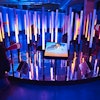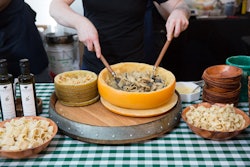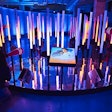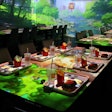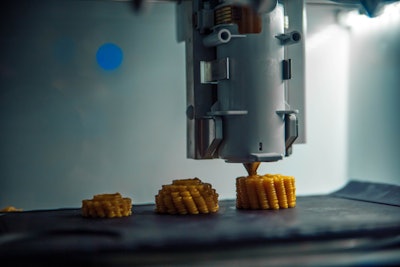
Most of the buzz about 3-D printing has been for its application in industries such as manufacturing, medicine, and automotive, but it’s also being used for food. Spanish manufacturer Natural Machines is the maker of Foodini, a 3-D food printer that can make everything from ravioli to chocolate sculptures.
“Our vision is that in 10 to 15 years, 3-D food printers will be a common kitchen appliance for both home and professional kitchen use,” said Lynette Kucsma, co-founder of Natural Machines. Foodini is currently being used in professional kitchens from restaurants in Spain to the University of Utah Hospital. It also was part of Sue’s Tech Kitchen, a tech-driven pop-up experience created by entrepreneur Randi Zuckerberg earlier this year.
“We don’t say that everything should be 3-D-printed just like everything you eat now is not from an oven,” Kucsma said. “But anything that would require food shaping or forming or layering, that’s where 3-D printers can do things easier and faster. And we can do different textures as well. There’s a misconception it has to be a liquefied form or jellied.”
For events, 3-D food printing creates unlimited options to personalize food to match the theme or decor and to create textures and arrangements that are not possible by hand. And automation makes the process faster, more efficient, and more uniform. It also can help manage dietary restrictions and nutritional issues.
“Whether that’s controlling calories, such as you can print a dessert that stops printing when it hits 200 calories, for example, or actually deep diving into your nutrition,” she said. “So if I want a breakfast bar after I go for a 5K run and I’m low on vitamin D and iron, I can print a bar that increases those levels for me.”

